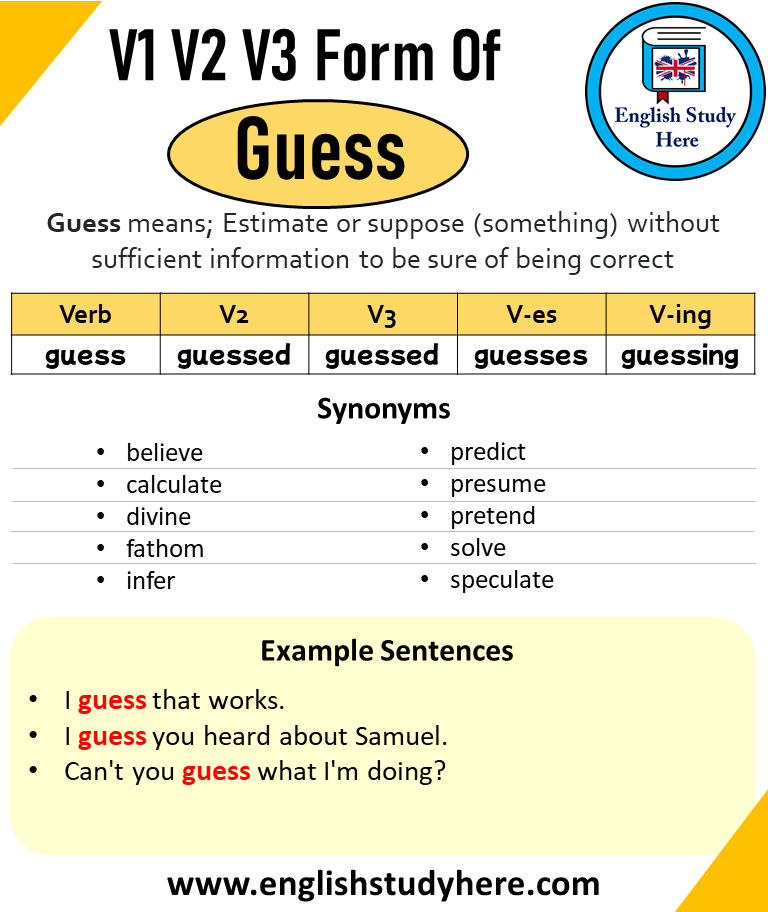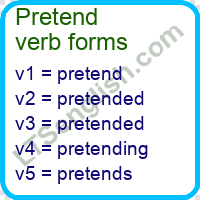Pretend Past And Past Participle Form V1 V2 V3 V4 V5 Form of Pretend
Do you ever find yourself puzzled by the various forms of the verb “pretend”? You’re not alone.
Understanding verb forms is a crucial part of mastering English, and “pretend” is no exception. Imagine being able to confidently use “pretend” in any context, whether you’re writing a story, having a conversation, or even teaching English to others. It’s not just about memorizing rules; it’s about feeling comfortable and natural in your language usage.
By the end of this article, you’ll have a clear grasp of the V1, V2, V3, V4, and V5 forms of “pretend. ” This will enhance your communication skills and give you the edge you need to express yourself with clarity and precision. Ready to dive in and transform your language skills? Let’s explore the world of “pretend” together.

Credit: ridgetoriveroutdoors.com
Base Form Of Pretend
Pretend is an action word. The base form is simple. It shows a basic action. People use it to act like something is real. Pretend is in present tense. Kids often pretend they are superheroes. Adults pretend in plays or movies. Pretend means to make believe. It can be fun or serious. Sometimes, pretend helps in learning new things.
Pretending can be creative. It allows imagination to grow. Many stories start with pretending. Pretend is part of everyday life. It helps people explore ideas. Pretending can be a part of games. Pretend is used in different ways. It is useful in storytelling. Pretend can be playful or thoughtful. It helps in understanding different perspectives.

Credit: englishgrammarhere.com
Past And Past Participle Forms
Pretend is a verb we often use in everyday talk. The past tense of pretend is pretended. We use it to talk about things that happened before.
The past participle form is also pretended. It helps in forming perfect tenses. For example, “She had pretended to be happy.” This form is useful in describing actions completed in the past.
| Verb Form | Example |
|---|---|
| V1 (Base) | Pretend |
| V2 (Past) | Pretended |
| V3 (Past Participle) | Pretended |
| V4 (Present Participle) | Pretending |
| V5 (3rd Person Singular) | Pretends |
Continuous And Perfect Forms
The word pretendcan change its form. These forms show different times. In the past, it becomes pretended. The continuous form is pretending. It shows action happening now. The perfect form is pretended. It shows action completed.
In English, verbs have many forms. Using the right form is important. It helps us understand time. The forms are simple, continuous, and perfect. The simple form is the basic one. The continuous form uses ‘-ing’. The perfect form uses ‘have’ or ‘has’ with the past participle.
Using these forms, sentences become clear. They show action, time, and completion. Practice helps you use these forms easily.

Credit: ltsenglish.com
Conclusion
Mastering verb forms can enhance your English skills significantly. Pretend’s different forms include V1, V2, V3, V4, and V5. Each form plays a unique role in sentence construction. Consistent practice will help you remember them easily. Understanding these variations can improve both writing and speaking.
Use them correctly to make your communication clearer. Keep practicing and don’t be afraid of mistakes. Remember, learning is a journey. Verbs are just one part of it. Stay curious and keep exploring English language intricacies. Your effort will pay off in the long run.






